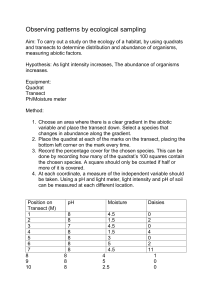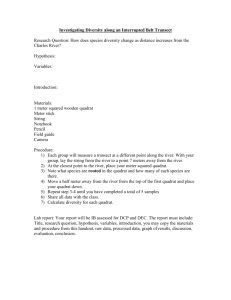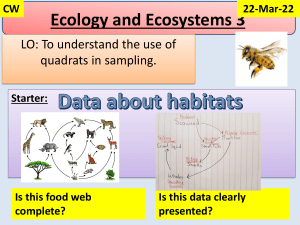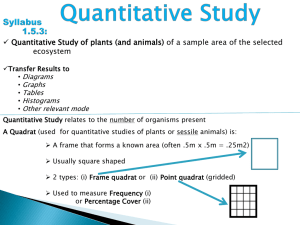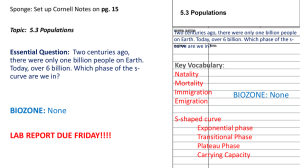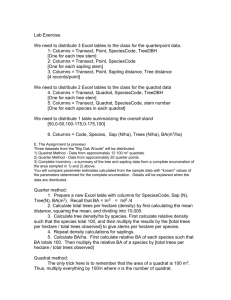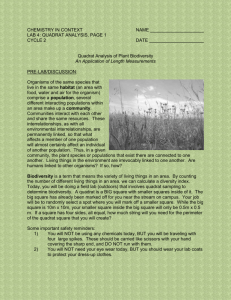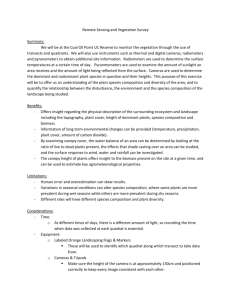Leaving Cert Workbook - Glenveagh National Park
advertisement
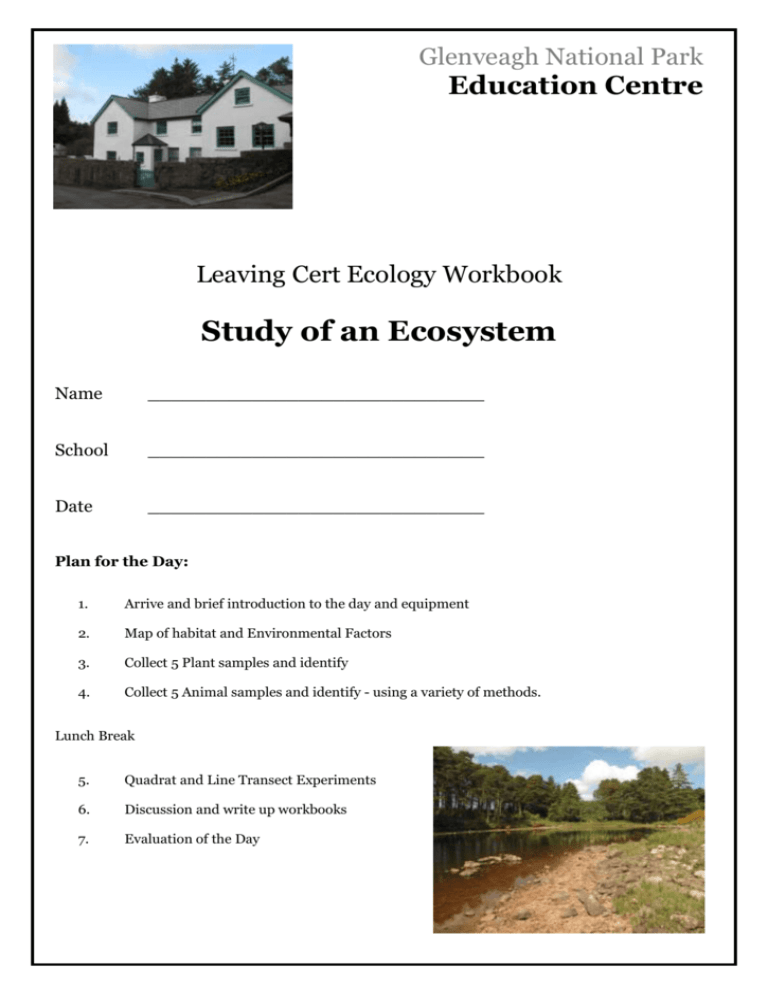
Glenveagh National Park Education Centre Leaving Cert Ecology Workbook Study of an Ecosystem Name _____________________________ School _____________________________ Date _____________________________ Plan for the Day: 1. Arrive and brief introduction to the day and equipment 2. Map of habitat and Environmental Factors 3. Collect 5 Plant samples and identify 4. Collect 5 Animal samples and identify - using a variety of methods. Lunch Break 5. Quadrat and Line Transect Experiments 6. Discussion and write up workbooks 7. Evaluation of the Day Map of the Ecosystem and its Habitats: Draw a plan view of the area. Write a brief description answering some of the following questions: What is the name of the area and where is it located? Which way is the area facing (aspect)? Is it level or not (steepness)? Is it an open are or surrounded (exposure)? Make a legend for key features and mark the direction North using a compass. Answers to questions: 2 Abiotic Factors (non living) including Climatic and Edaphic (soils) factors: Use the equipment provided to record the following:( Record 3 ) Abiotic factor Apparatus used and Diagram How it was used Air temperature Soil temperature Soil pH Light intensity Percentage of water in the soil Link these to plant/animal adaptations: Abiotic factor Plant/animal Adaptation 1. 2. 3. 3 Identify and record features of five plants: Mark the location of each on the map drawn using the key P1, P2.... Plant Name Where Found Adaptation Interdependence Competition Sketch Notes: 4 Animal/ Invertebrate sampling: Experiments with pooters, sweep nets, pitfall traps, small mammal traps and beating trays, cryptozoic trap and tullgren funnel. Identify, record and sketch 5 samples. Mark the location of each on the map using the key A1, A2 etc. Animal Name Where Found Adaptation Interdependence Competition Sketch Notes on methods used and possible sources of error: 5 Qualitative and Quantitative Study Plant Frequency and Percentage Cover: Use the quadrat, identification material and a pencil. Throw the pencil anywhere within your site. Set one corner of the quadrat where the pen landed keeping the quadrat parallel to the boundary of your site. You will do this ten times and record two sets of information – one for Frequency and one for Percentage Cover. Step 1: Throw the quadrat and record the presence or absence of each of your 5 plants inside the quadrat in the frequency table below, with a tick if it is present. Add the names of any new plants that you find that you didn’t identify earlier if time allows. Step 2: After each throw, record the percentage cover of each of your 5 plants in the second table. Count the number of times each plant touches the top right hand corner of each small grid within the quadrat. *A full size quadrat would have 100 squares so multiply your count by 4* Step 3: Repeat 10 throws of the quadrat, making recordings in each of the two tables. Frequency Table Plant Name Percentage Cover Table Plant Name Quadrat No 1 2 3 4 5 6 7 8 9 10 %Frequency 8 9 10 %Cover Quadrat No 1 2 3 4 5 6 7 6 To calculate the totals: Percentage Frequency Calculations: To calculate % frequency use this formula: Number of quadrats containing the plant total no. of quadrats x 100/1 Percentage Cover Calculations: To calculate the % cover, use this formula: No. of points covered Total No. of grid points x 100 1 Results Graphs Draw a graph of your results, with % frequency on the Y axis and plants on the X axis 7 Graphs Continued: Draw a graph with the % cover results, in a similar way: What do these graphs tell you about the distribution of plants in the habitat? How can these results be linked to Abiotic Factors and Adaptations? 8 Line Transect: Study the changes in vegetation - compare with the abiotic factors to see adaptations Lay the marked rope across an area of change in the habitat. Stake the rope at each end. Record what plant (or animal) is touching or under the rope at each 1m station. Labelled Diagram of Transect: Results: Station Number at 1m intervals Name of plant (or animal) touching or under the mark 1 2 3 4 5 6 7 8 9 10 What do these results tell you about this area of the ecosystem? What Abiotic Factors are influencing your findings? 9 Discussion Notes : Use this space to record significant observations, interesting points, or anything else that arises from the conversation. Make drawings and diagrams to help you remember what you saw and did. 1. Adaptation of Species - structural or behavioural: 2. Food chains and webs: 3. Energy Flow and Pyramid of Numbers: 4. Abiotic factors (and biotic) affecting the results of your study: What did your results tell you about the ecosystem? What sources of error were there? What else could be investigated? What are your conclusions? 10
